NASA’s Orion spacecraft splashed down in textbook fashion in the Pacific at 12:40 p.m. EST on Sunday after a successful uncrewed test flight of 25.5 days around the moon.
Three brightly-colored main parachutes opened automatically to slow the craft to 20 mph before the capsule struck the ocean waves more than 100 miles off the coast of Baja California, Mexico, near Guadalupe Island. A total of eight parachutes and drogues were used before the three 116-foot diameter mains opened.
A skip entry maneuver over Earth’s atmosphere helped Orion slow down from its re-entry approach speed of nearly 25,000 mph to make the landing more precise and to test the protective heat shield designed to repel re-entry temperatures of 5,000 degrees F.
"The heat shield had to work and did beautifully," NASA Administrator Bill Nelson said on NASA TV. "The parachutes had to work and did as well." Overall, he said the Artemis I mission allowed engineers to perform more tests than were originally expected. "Everything performed well and NASA added a lot of tests. We're up to our ears in data, thankfully."
Navy boats, helicopters and divers worked to attach lines to the Orion crew module while testing was done in the seas before hauling Orion back to a protected bay on the well deck of the USS Portland. The entire recovery following splashdown was expected to last four to six hours before returning the module to the San Diego Naval Base.
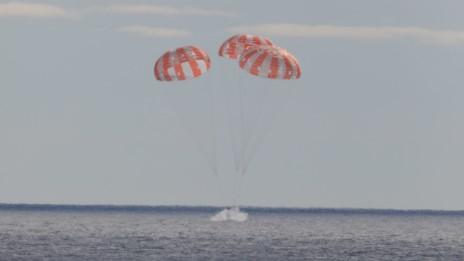
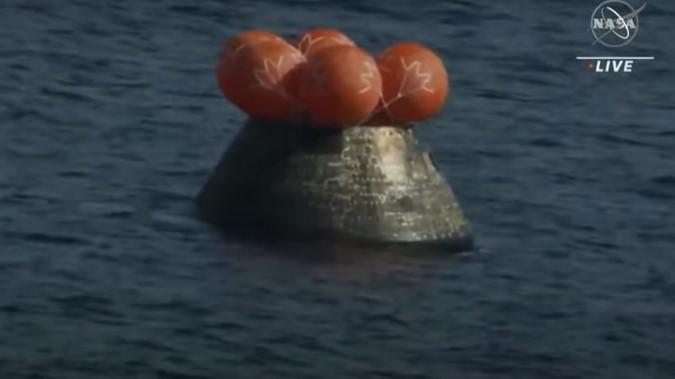
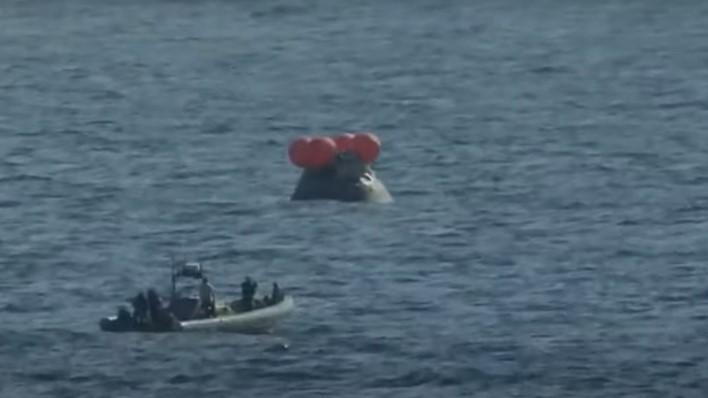
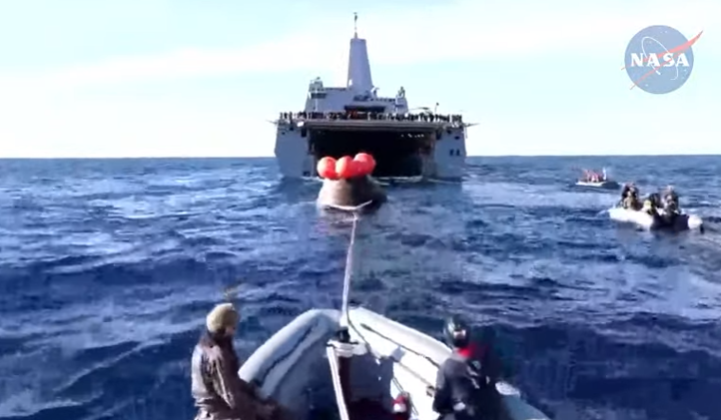
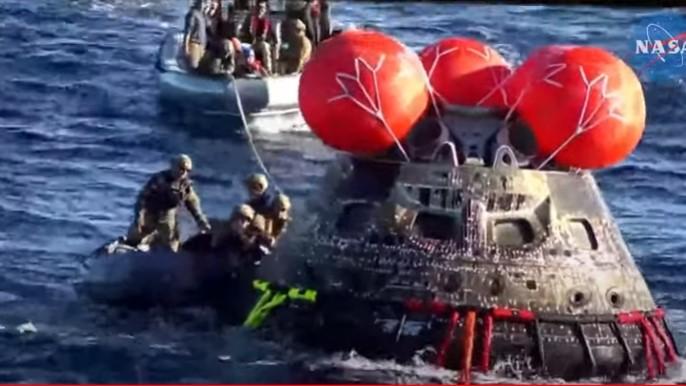
The Orion spacecraft launched aboard the massive Space Launch System from Kennedy Space Center in Florida on Nov. 16 in the first flight of the Artemis missions to the moon and eventually to Mars. The entire Artemis I mission took Orion 1.3 million miles around the moon. Preparations for Artemis II are already underway to take a crew to the moon as early as 2004, with a landing on the moon as early as 2005 with Artemis III.
NASA confirmed the European Service Module separated from the Orion Crew Module at noon EST. The ESM burned up in the atmosphere over the Pacific. NASA has contracted with the European Space Agency to build several future service modules for Artemis flights.
Nelson said the cooperation with ESA and 3,000 vendors working on the Artemis technology typified the way NASA has approached space exploration. "We don't do it secretly and do it openly and we don't do it without our friends...and commercial partners," he said.
The splashdown occurred 50 years to the day that astronauts landed on the moon in the Apollo 17 mission, the last time humans walked on the moon. "We are now going back into deep space with a new generation," Nelson said.
RELATED: Artemis mission goals include human mission to Mars by 2040
RELATED: NASA’s Orion splashdown set for Sunday in crucial heat shield test